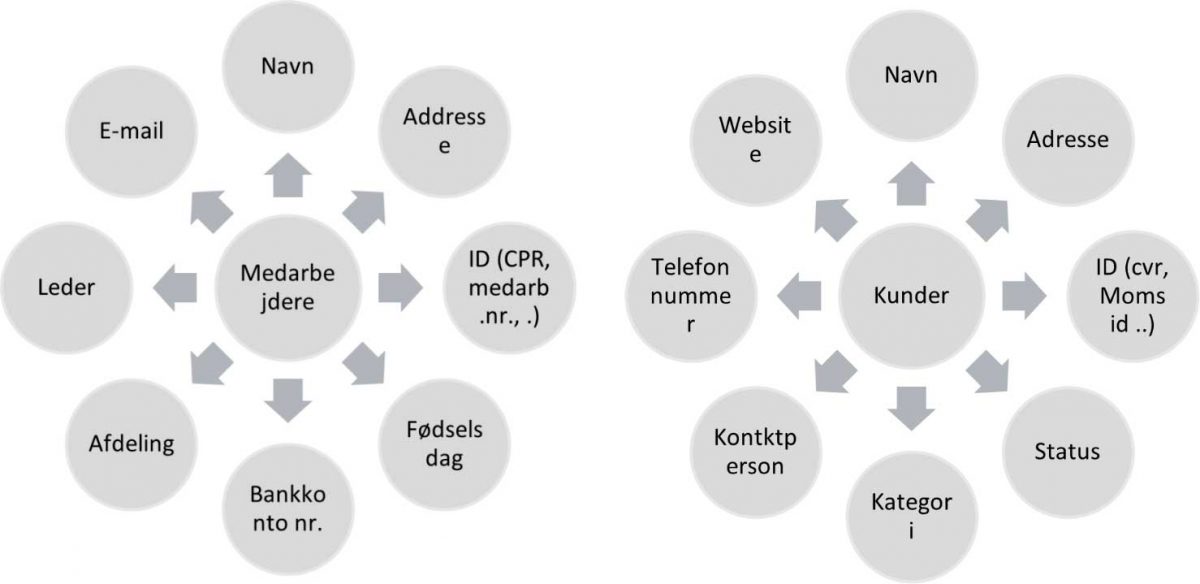Master Data Management has been on the agenda for many companies for some years now, but only in recent years has there been particular focus on introducing management of the company’s Master Data as a discipline.
This is because new systems are implemented to a greater degree and data accessibility and volumes are generally increasing. The importance of having correct data is not new; however, the complexity is gradually increasing, which leaves companies without proper control. This results in a solution that often involves a lot of manual and neglected work.
Before we get started, let’s just quickly agree on what Master Data Management actually is. Let’s split it up in two: “Master Data” and “Management”.
Master Data
Master Data constitutes a company’s core information, e.g. on customers, suppliers, products, employees, etc. (Let’s call these data objects at this stage). For example, the information tells us something about the individual data objects’ identity, affiliation, etc. (name, address, company reg. no., telephone no. email, website, etc.) and is often to a large extent statistical; however it can change over time, for instance in connection with address changes, name changes, turnover, etc. It is often also information that is used in many different systems, which means that there is a certain risk for redundant data and duplicate data.
This master data is created and used widely across the organisation, and it is the basis for the data in the company’s business processes, e.g. procurement, sales, logistics, marketing, finance and HR. In other words, it is an important asset for all companies.

Illustrated examples of the master data of data objects.
Management
Management is “administration of an organisation”, which includes: strategy coordination of the employees’ efforts and reaching goals with the available resources (finance, resources, technology).
If we take this in relation to the task of handling master data for data objects, then management is necessary to ensure that there is a strategy and plan in this area, some clear goals and appropriate resources to carry this out.
The key to success with Master Data Management as a discipline in a company is therefore to have the right level of governance, processes and procedures introduced in the organisation, dedicated employees to perform the work as well as relevant systems and tools to support the employees effectively in their work.
Or, more concisely, Master Data Management is “the processes, employees and technology that a company utilises to ensure that the master data of data objects is always up to date and accurate.”
Why is it so important to manage your Master Data?
The consequence of not managing your Master Data is often poor data quality, and poor data quality can harm the company in several ways:
-
It kills your marketing campaigns
If your message does not reach the right people due to incorrect contact information, your campaign falls apart -
It reduces customer satisfaction and trust in your company
If your customers do not receive relevant information through their preferred communications channels, they will find other alternatives -
It harms your brand’s reputation
If your data is imprecise, your workflows will be ineffective and unstructured, and you will risk bombarding customers based on duplicate contact data -
It affects lead generation
Leads fail due regularly outdated data -
This results in the inability to make informed decisions
Incorrect data also makes it difficult to make decisions that benefit the company going forward -
This leads to lost business opportunities
If your marketing efforts do not connect with and involve your target group due to poor quality data, you will miss opportunities
How hard can it be?
It may sound simple, but then why are there still so many companies that struggle to get a handle on their Master Data? Here are some examples of good explanations and typical challenges.
-
Dispersed data
Data is spread over a large number of different systems and applications, and it is available in many areas that the company is not fully aware of -
Incomplete data
A lack of data and data updates results in a risk of drawing wrong conclusions in analyses and problems in operational tasks that are dependent on complete data -
A lack of common terms
A lack of clear, understandable business definitions can result in misunderstandings across businesses. This makes it difficult know when data is correct and accurate. -
Redundancy and duplicate data
Redundant data leads to confusion and more work. Companies do not know which data is “the right data”, and this can lead to errors and deficiencies in deliveries and interactions with partners. -
Lack of integrations
A lack of integrations between systems means that employees must perform manual updates in several places, and the need for management and control is doubled for every system. -
Lack of funding
High costs for creation, update, data cleaning, etc. make it difficult to get internal funding, which means that the work is often not prioritised and the task grows over time. -
Lack of organisational ownership
Lack of ownership and responsibility for data leads to a risk that the tasks are neglected and increases the likelihood of poor data quality.
All challenges that can prevent companies from succeeding with their Master Data Management.
We will talk more about this over the next few months in a series of blogs that will address the challenges and solution proposals that can help.
The theme of the series will be:
-
Golden Record
-
Best practice – do’s and don’ts
Happy reading!
